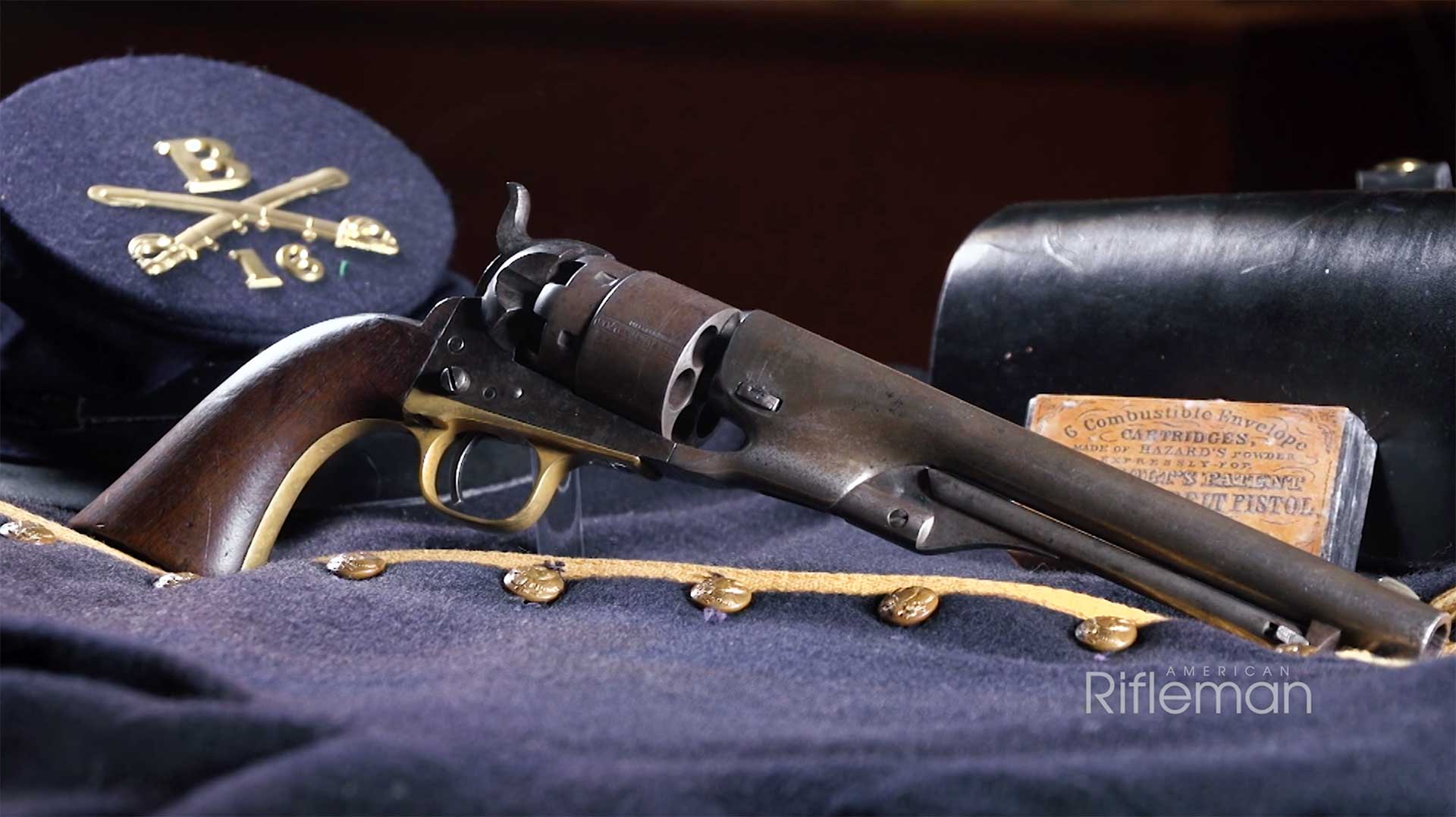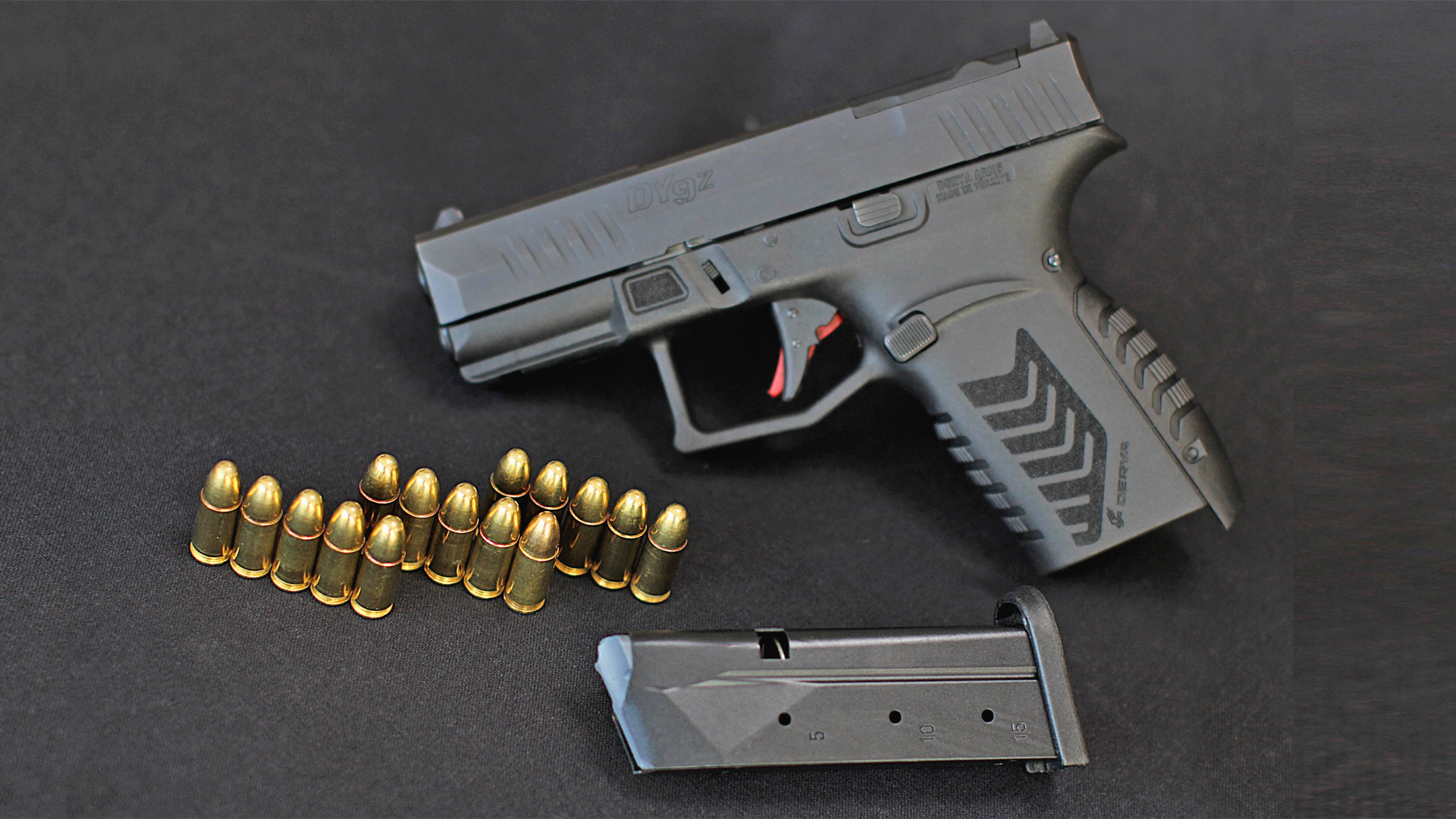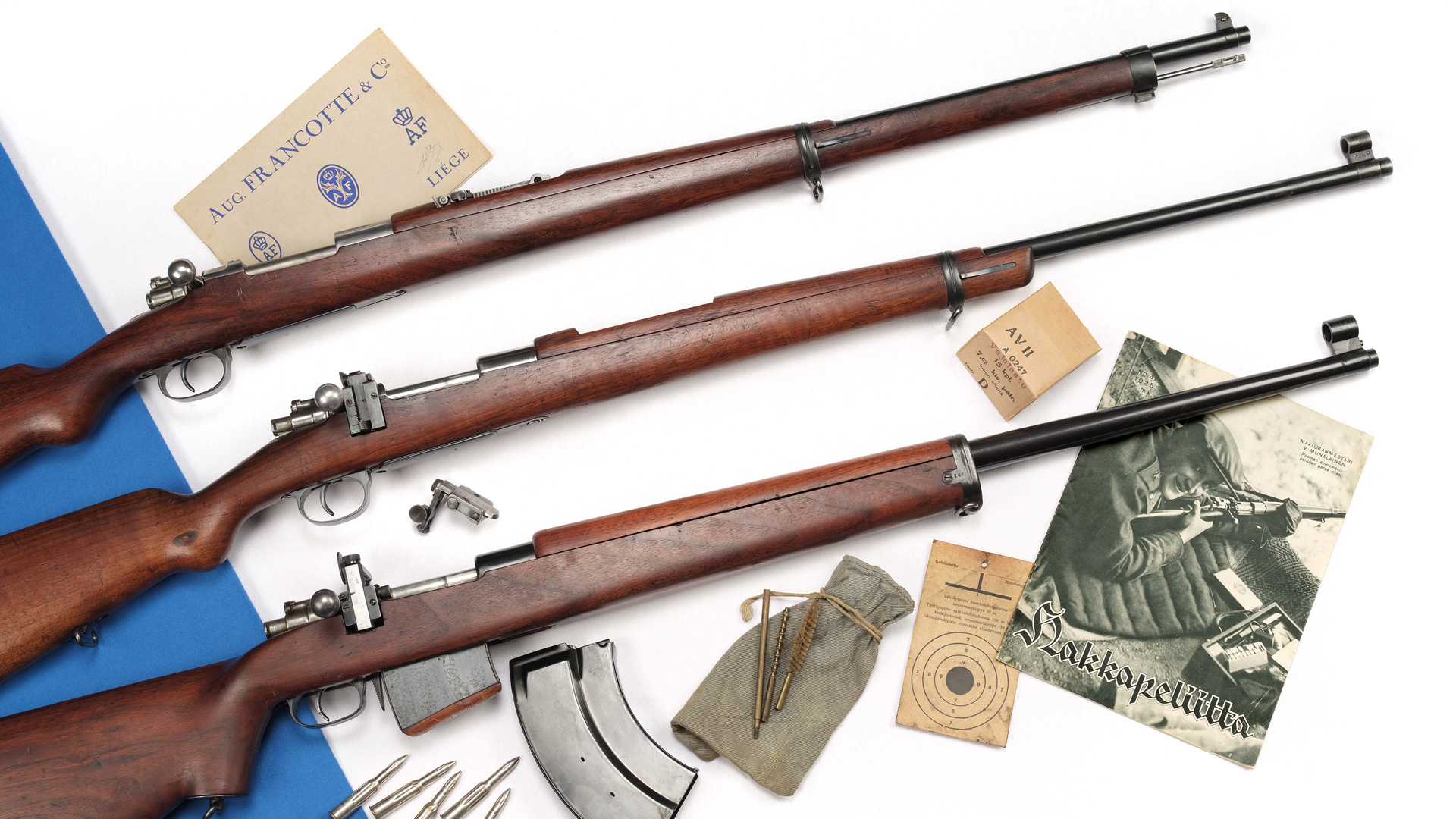
Most hunters consider traditional lever-action rifles to be less accurate than bolt-action rifles, and let it go at that. Altogether, there is no way the lever-action, with its rear locking lugs, two-piece stock and a tubular magazine tied to its barrel, can compete with the bolt-action’s rigid lockup and one-piece stock. But even though the bolt-action may have the accuracy edge, lever-actions are still plenty precise for many hunting applications.
To confirm that I wasn’t just trying to convince myself of that, I talked with Eric Lundgren, the product manager for Remington and Marlin rifles. He shot his first deer many years ago with a lever-action Marlin Model 336 chambered in .30-30 Win. “I’ve been a 336 junky ever since,” he said. “In fact, I killed my first 10 deer with the 336, and still occasionally hunt with the rifle.”
Lundgren said Marlin engineers have managed to produce great accuracy when testing Marlin lever-actions. It all depends, however, on a couple of important factors. One of those factors is the bullets fired through those firearms. Often, the big, round-nose, flat-base bullets commonly shot in lever-actions do not possess quite the accuracy potential of the sleek, boattail designs commonly fired in bolt-action rifles. Another factor is sights. “The open sights on lever-actions are rugged,” Lundgren said. “But I’m 51, and can’t see them as well as someone who is 21.” Marlin tests its Model 1894 lever-action chambered in .44 Mag. for accuracy at 50 yds., aiming with the carbine’s open sights. “We expect the guns to shoot 2" groups at that distance,” he said.
Conversely, Marlin tests the accuracy of its Model 336 and 1895 rifles at 100 yds. and mounts scopes on them to remove eyesight issues from the accuracy equation. “Our new Model 1895GSBL .45-70 shoots groups between 1½" and 2" at 100 yds.,” he said. “Bolt-action rifles may be a bit more accurate, but not all that much.”

When Marlin’s New Haven, Conn., plant closed in 2010, the company moved, lock, stock and barrel, to Remington’s factory in Ilion, N.Y. Not only were there some missteps moving machines from New Haven to the Remington facility at Ilion, most of the New Haven employees did not make the move, and so their rifle-making knowledge and talent was lost in the shuffle. Some of the re-installed equipment was 60 years old and produced poor-quality parts when it was finally running at the Ilion plant. To add to the misfortunes, no three-dimensional drawings of Marlin rifle parts had ever been made. Longtime fans of Marlin rifles lamented.
In the years that followed, Marlin engineers at the Remington facility in Ilion completed diagrams of parts for the 336, 1894 and 1895 rifles, and new equipment was brought online to produce those models. Even the Model 444, chambered in .444 Marlin, has returned, which is good news for the United States and European markets—boar hunters in the latter had been eagerly awaiting the .444s, as it is a particular favorite for that pursuit on the Continent.
Lundgren noted that being forced to re-engineer the Marlin rifles has resulted in a manufacturing process that now renders parts very precisely. How those parts are assembled contributes greatly to a rifle’s accuracy. The 336 and 1895 receivers start as a big slab of stiff steel. For example, “Threading the barrel so it is properly aligned with the receiver does a lot for accuracy,” Lundgren said.

The 1973 Marlin Sporting Firearms catalog stated “The accuracy of any lever action rifle with a two-piece stock depends on firm, even bedding of the buttstock and receiver. That’s why all Marlin lever action models, including .22s, feature individually mated buttstocks and receivers.” To attain that tight fit, Marlin used to heat the tangs of receivers red hot and press them into the inletting of the buttstock. “I knew Marlin did that,” Lundgren said, “but I thought it was only to create a perfect fit of the receiver and stock.”
Marlin no longer applies a red-hot fit to its buttstock and receiver. Nonetheless, Marlin still strives for a tight fit between the receiver and buttstock and fore-end. “The more solid the fit of the receiver between the stock and forearm, the less movement there is and the more consistent accuracy you will get,” Lundgren said.
Free-floating a barrel, so it does not touch the fore-end barrel channel, has been the trend for years to ensure the accuracy of bolt-action rifles. That is nearly impossible, and completely impractical, for a traditional lever-action with attachments to the barrel such as the fore-end, front and rear bands and a magazine tube plug screw. Removing barrel contact with these parts would have them rattling like castanets. It’s better to make sure those parts are in secure and consistent contact with the barrel. “As precise a fit as possible of these parts (on the barrel) helps limit their movement and puts much less stress on the barrel,” Lundgren said.
Rifle Repose
Shooting a lever-action with its fore-end supported on a rest can transfer some of the bounce of the fore-end to the barrel and disrupt accuracy. I shot a Marlin 336C chambered in .35 Rem., wearing a Leupold FX-II 4X 33 mm scope, and a Winchester Model 94 Legacy in .30-30 Win., mounted with a Nikon Monarch 1.5-4.5X 20 mm scope, with their fore-ends in different positions on the firm pad of a Caldwell shooting rest to determine which position showed the least effect.
The Model 94 shot as follows for two, three-shot groups with Winchester Supreme .30-30 Win. 150-gr. Ballistic Silvertip cartridges:
Fore-end Position on Rest Average Group Size
Front 2.38"
Middle 2.30"
Rear 1.62"
The front- and middle-fore-end position groups show the Model 94’s thin fore-end must have bounced on the rest and interfered with the barrel. Positioning the rear of the fore-end on the rest seemed to somewhat diminish that interference. It would follow, then, that the Model 94 would shoot its best rested on the bottom of its receiver. But the rifle was difficult to hold steady supported by only its thin receiver and the barrel hanging out over the rest like a wavering yardarm.
The accuracy of the Marlin 336C was less disrupted by the bounce to its fore-end. This is how the rifle grouped Remington Express .35 Rem. cartridges loaded with 150-gr. Core-Lokt Pointed Soft Point (PSP) bullets with the fore-end at various positions:
Fore-end Position on Rest Average Group Size
Front 0.98"
Middle 1.63"
Rear 1.32"
There is really little difference in the size of these groups when you consider the rifle wears only a 4X scope. Over its entire length, the Marlin’s fore-end is a good third of an inch thicker than the Model 94’s fore-end. That big slab of wood fairly well insulated the barrel from the bounce of recoil.

I have always wondered if the Model 94’s bullet impact would shift if the rifle were fired with its tubular magazine empty, partially or fully loaded. It stands to reason that 6 ozs. of additional weight (eight cartridges) hanging beneath a lever-action’s barrel would affect accuracy and alter bullet impact.
To test that theory, I loaded the Winchester’s chamber with a .30-30 Win. cartridge loaded with a Sierra 150-gr. Pro-Hunter bullet and 32.0 grs. of TAC powder. I then loaded eight more of the cartridges into the magazine. The first three shots formed a 2.27" group at 100 yds. The next three shots punched a 1.59" group and the final three shots a 2.34" group. There was only 0.75" difference between the largest and smallest groups. Plus, the bullets’ impact point remained the same for all three groups—so much for that notion.
 Reloading
Reloading
After shooting 40 or so, each, of the Winchester Supreme .30-30 Win. 150-gr. Ballistic Silvertip cartridges and Remington Express .35 Rem. 150-gr. Core-Lokt Pointed Soft Point (PSP) cartridges, groups averaged slightly more than 2" for the .30-30 Win. and a touch less than 2" for the .35 Rem.
Reloading those spent cases so they are sized to closely fit the chamber and position bullets near the rifling—a popular method of reloading cartridges for bolt-action rifles—should help the lever-actions shoot their best. Because old-style lever-actions lock at the rear of the bolt, there is some spring to the bolt on firing, and cases may have expanded enough that they will not fit back into the chamber. But the .35 Rem.’s maximum average pressure is a relatively low 33,500 p.s.i. (and the .30-30 Win. is marginally higher at 42,000 p.s.i.) and once-fired .35 Rem. cases fit back into the Marlin’s chamber.
Those cases, with half their necks sized in an RCBS full-length sizing die, fit into the chamber with only a bit more pressure than normal on the lever being required to close the bolt. Threading the RCBS sizing die into my reloading press so the shell holder, at the top of its stroke, barely contacted the bottom of the die, set back the shoulders of once-fired cases 0.002" and slightly sized the rest of the cases for a glove-like fit in the Marlin’s chamber.
Those once-fired cases measured 1.905" to 1.908", which is shorter than the .35 Rem.’s trim length of 1.910". The cases stretched to a length of 1.910" to 1.914" after they were partially re-sized. Trimming those cases to a uniform length of 1.910" ensured the same amount of crimp is applied to the bullets’ cannelure to fasten them in place against the tension of a compressed tubular magazine spring and recoil force. Additionally, identical crimps provide uniform release of bullets, which aids accuracy. An overlength case will receive an excessive amount of crimp and bulge the .35 Rem.’s slim shoulder—resulting in a cartridge a hunter will struggle to chamber when Mr. Big Buck finally appears from hiding.
A rifle, no matter its action type, should shoot fairly well with any proper ammunition. It will likely shoot its best, though, with a particular combination of propellant, bullet and bullet seating depth. The only certain way to determine your rifle’s most accurate load is to shoot the rifle with several loads. A three- or five-shot group will reveal a load’s promise, and some further shooting will confirm it.
For the Winchester Model 94 in .30-30 Win., a cartridge length of 2.553" placed Sierra 150-gr. RN Pro-Hunter bullets in contact with the start of the rifling. That length was longer than the .30-30 Win.’s maximum cartridge length of 2.550". A shorter cartridge length was required for trouble-free cycling through the 94’s action. Previous shooting showed accuracy remained the same with cartridge lengths of 2.545" and 2.520". I loaded CFE 223, TAC and Varget propellants in .30-30 Win. cases and seated the Sierra bullets for a cartridge length of 2.545". TAC won the accuracy contest between the three propellants with a 1.75" group.
The following day, the Model 94’s clean barrel required six shots to blow out the remaining solvent and settle down before shooting decent groups. With the barrel completely cool, the Sierra/TAC combination shot three-shot groups one right after the other of 1.08", 2.32" and 3.57", for an average of 2.32". The ever-increasing size of the groups revealed that prolonged shooting can heat a lever-action’s barrel to the point that bullets start spreading across the target. Shooting at a slower pace, to keep the barrel cool, is the simple solution for that.

Sierra 200-gr. Pro-Hunter bullets shot well from the Marlin chambered for .35 Rem. with Benchmark, IMR 4064, Varget and X-Terminator propellants. X-Terminator prevailed with a three-shot group measuring under 1/2" at 100 yds. and a muzzle velocity of nearly 2100 f.p.s. That tight group was a fortunate fluke, as further shooting produced groups of 0.77", 1.33" and 2.15" for a very acceptable 1.42" average that looks right into the eye of many bolt-action hunting rifles.
Cases were partially re-sized for all those cartridges loaded with TAC. On the bench sat six of the same cartridges, except only half the length of their necks were sized. Slight resistance closing the Marlin’s lever the last bit to chamber the cartridges predicted the outcome. Groups ranged from 1.75" to 2.53".

Vague Aim
Open sights are the primary reason for the lever-action’s supposed inadequate accuracy. The Marlin’s open sights consist of a front blade, which presents a flat brass bead to the eye, that is aligned with the notch of the semi-buckhorn rear sight. The 1" target square, that provided a precise aiming point through the Leupold scope on the Marlin, appeared as an indistinct dot in the distance looking over the Marlin’s open sights. Although it seems contrary, a larger target provides a more exact aiming point for open sights. A target consisting of a 1"-wide black ring surrounding a 4"-diameter white circle provided a clear point to align the Marlin’s front bead. Two, three-shot groups, with the Sierra 200-gr. Pro-Hunter bullet and TAC combination, on the big circle target measured 4.72" and 3.60". There was only 1" of horizontal spread to those groups, indicating I had some difficulty exactly aligning the front bead in the rear notch from shot to shot.
Traditional lever-action rifles are far from outdated. Untold numbers of hunters, attired in camouflage synthetic or plaid wool, are carrying on the hunt today with lever-actions in hand. A basic bolt-action rifle may possibly dot its “I” a shade more precisely than the Winchester Model 94 and Marlin 336, but that advantage is imperceptible on game. The lever’s hunting agility and ability are clearly visible in the deer thickets across the nation.





































